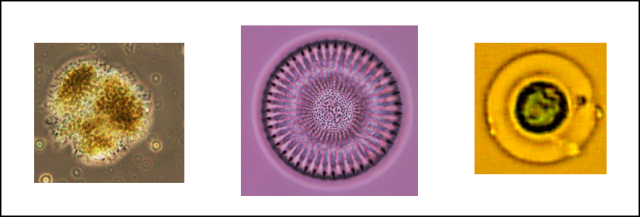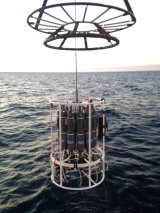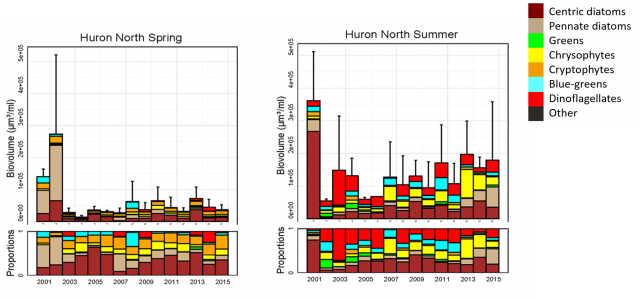Great Lakes Phytoplankton Monitoring
On this page:
- What are phytoplankton?
- Why does GLNPO monitor phytoplankton?
- How does GLNPO sample and analyze phytoplankton?
- What are the resulting data trends?
What are phytoplankton?
Phytoplankton are free-floating, microscopic algae. Since phytoplankton require the sun's energy to turn carbon dioxide and water into food and energy via photosynthesis, they inhabit the sunlit upper layers of freshwater and marine environments.
Common types of phytoplankton in the Great Lakes include:
- Diatoms
- Green algae
- Cyanobacteria (blue-green algae)
- Flagellates
Why does GLNPO monitor phytoplankton?
Phytoplankton are the base of the food web, which means these microscopic plants fuel all other parts of the ecosystem. This role makes them a major component of the Great Lakes food web, serving as the main food source for zooplankton and prey fish. Phytoplankton are also sensitive to water quality changes, and can serve as the first indicators of nutrient and contaminant changes, and physical (such as climate) changes in the lakes.
How does GLNPO sample and analyze phytoplankton?
As it is lowered through the water column from the surface of the lake to the bottom waters, the Rosette Sampler is used to collect water samples containing phytoplankton. Sample bottles on the Rosette are closed at various depths to collect water. The water from each bottle is later mixed together to form a combined sample before being preserved.
A microscope is used to count and identify the phytoplankton in the resulting preserved water samples.
What are the resulting data trends?
- Lake Erie's central basin had a notable increase in spring centric diatoms, while the whole of Lake Erie shows a summer increase in cyanobacteria.
- Spring phytoplankton declines, mainly attributed to a decrease in diatoms, are occurring in Lakes Huron and Michigan, a probable result of invasions by non-native zebra and quagga mussels that have reduced pelagicThe open ocean, excluding the ocean bottom and shore. nutrients and selectively consumed phytoplankton.
- Phytoplankton levels in Lake Superior are also dropping, along with the size of individual phytoplankton.
L-R: The spring phytoplankton biovolume in northern Lake Huron has declined. There has also been a change in species composition, with a decline in pennate diatoms. The summer phytoplankton community in northern Lake Huron has also seen a change in species composition, with a decline in centric diatoms.




